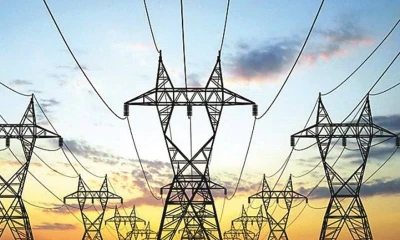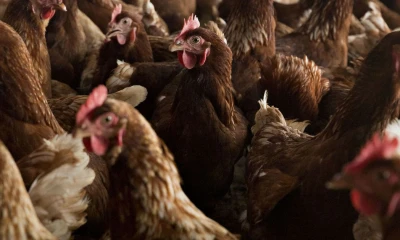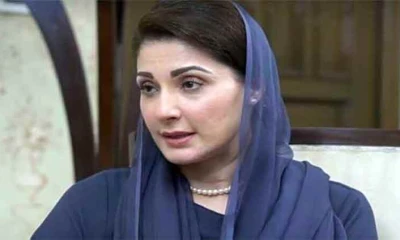Sports
ICC issues updated T20I rankings for batters, bowlers
Mohammad Rizwan (781 points) and Babar Azam (761 points) held their positions at third and fourth respectively in the ICC T20 batting rankings

Lahore: The latest T20I rankings for batters on Wednesday witnessed significant changes, particularly highlighting players from Ireland and Pakistan following their series in Dublin.
Andrew Balbirnie from Ireland advanced six places to 53rd after scoring 128 runs across three matches against Pakistan.
His teammate, Harry Tector, also made notable progress, jumping 12 spots to 69th after accumulating 98 runs in the series.
From Pakistan, the aggressive left-hander Fakhar Zaman climbed four places to 57th in the updated batting rankings.
Mohammad Rizwan (781 points) and Babar Azam (761 points) held their positions at third and fourth respectively in the ICC T20 batting rankings, with Suryakumar Yadav remaining at the top with 861 rating points.
In the bowling rankings, Imad Wasim made a substantial leap, moving up 24 spots to tie for 52nd. He also advanced five places to 16th in the all-rounder rankings, thanks to his economical bowling against Ireland.
Shadab Khan, however, experienced a setback, dropping six places to 33rd in the bowling rankings after conceding 54 runs in four overs without taking a wicket during the first T20I. This performance led to his exclusion from the subsequent two matches against Ireland.
Besides it, Haris Rauf fell three spots to 27th in the rankings after missing the Ireland series.
Business
IEA cuts 2024 oil demand growth forecast, widens gap with OPEC
Global oil demand this year will grow by 1.1 million barrels per day (bpd)

London (Reuters): The International Energy Agency (IEA) on Wednesday trimmed its forecast for 2024 oil demand growth, widening the gap with producer group OPEC in terms of expectations for this year’s global demand outlook.
The divide between the IEA, which represents industrialised countries, and the Organization of the Petroleum Exporting Countries sends divergent signals about oil market strength in 2024 and, over the longer term, about the speed of the world’s transition to cleaner fuels.
Global oil demand this year will grow by 1.1 million barrels per day (bpd), the Paris-based IEA said in a monthly report, down 140,000 bpd from the previous forecast, largely citing weak demand in developed OECD nations.
The agency said the lower 2024 forecast was linked to poor industrial activity and a mild winter sapping gas oil consumption, particularly in Europe, where a declining share of diesel cars was already undercutting consumption.
“Combined with weak diesel deliveries in the United States at the start of the year, this was enough to tip OECD oil demand in the first quarter back into contraction,” the agency said, noting though that the OECD slump was somewhat offset by resilient non-OECD demand led by China.
In its monthly report on Tuesday, OPEC stuck by its expectation that world oil demand will rise by 2.25 million bpd in 2024. The 1.15 million-bpd difference is about 1% of world demand.
The gap between the IEA and OPEC is now even wider than it was earlier this year, when a Reuters analysis found that the 1.03 million-bpd difference in February was the biggest since at least 2008.
The two are closer in their projections for 2025. The IEA on Wednesday slightly raised its demand growth estimate to 1.2 million bpd. OPEC left its 1.85 million-bpd forecast unchanged.
Supply growth down too
The IEA also trimmed its estimates for oil supply in 2024, citing heavy outages in Brazil and logistical constraints in the U.S..
World supply will rise by 580,000 bpd this year to a record 102.7? million bpd, it said.
Last month, global supply growth was seen at 770,000 bpd.
The state of the supply-demand balance will inform decision-making by OPEC+ - which groups OPEC and allies led by Russia - on whether to extend voluntary oil output cuts into the second half of the year when it meets in June.
The IEA now estimates that the demand for OPEC+ crude plus inventories will average 41.9 million bpd in 2024, up slightly from 41.8 million bpd last month, implying a tighter overall market balance.
While OPEC on Tuesday sounded an upbeat tone on the global economic outlook, the IEA was more cautious.
Although the global demand economic outlook has improved since the end of last year, sticky inflation in major Western economies has pushed investors to dial back their expectations for central bank interest rate cuts, the IEA said.
High borrowing costs, which have been in place for months in the U.S. and Europe, dampen economic growth and oil demand.
Next year, the market looks more balanced overall, the IEA predicted, with supply rising outside OPEC.
Even if OPEC+ voluntary production cuts were to stay in place, global oil supply could jump by 1.8 million bpd in 2025, compared with this year’ 580,000-bpd increase, the agency forecast, largely on the strength of non-OPEC+ output growth.
The IEA and OPEC also differ over the demand outlook in the medium and long term.
The IEA expects oil demand to peak by 2030. OPEC thinks oil use will keep rising for the next two decades and has not forecast a peak.
Business
Govt proposes to increase electricity prices
The sources say that that the Central Power Purchasing Agency (CPPA) proposed a burden of Rs347 billion on electricity consumers for the upcoming fiscal year

Islamabad: The federal government is preparing to deliver another blow to the public already suffering from inflation by increasing electricity prices.
The sources close to the development said that the Central Power Purchasing Agency (CPPA) proposed a burden of Rs347 billion on electricity consumers for the upcoming fiscal year.
The CPPA submitted a request to NEPRA to set the purchase rates for electricity for the next fiscal year.
The sources said that the electricity consumers would also bear the cost of inflation in the United States, with a proposal to include a 2.40% increase in tariffs due to US inflation.
Besides it, there is a recommendation to incorporate a 12.20% operator fee based on domestic inflation rates.
It is reported that a 21.37% interest rate on electricity purchases is also recommended to be charged to consumers.
Furthermore, there is a proposal to collect up to Rs17.42 per unit under capacity charges.
The CPPA requested to set the fuel cost at Rs9.34 per unit and proposed that electricity companies sell electricity at a minimum of Rs27.11 per unit for the next fiscal year.
The electricity companies would include taxes before selling electricity to consumers.
Besides it, the sources revealed that a monthly operator fee of Rs3.48 per unit is proposed to be added to the electricity rates, and it is suggested that the electricity purchase price for the next fiscal year be set at Rs300 per dollar.
-

 Regional 14 hours ago
Regional 14 hours ago8 surprising reasons to stop hating cicadas and start worshipping them
-

 Sports 1 day ago
Sports 1 day agoPakistan decide to bowl first against Ireland in third T20I match
-

 Technology 2 days ago
Technology 2 days agoFisker’s brakes can’t catch a break
-

 Regional 14 hours ago
Regional 14 hours agoArmed groups are likely committing ethnic cleansings and atrocities in Darfur — again
-

 Business 1 day ago
Business 1 day agoGold price again declines by Rs1,200 per tola
-

 Business 2 days ago
Business 2 days agoPetroleum prices likely to fall in Pakistan
-

 World 3 hours ago
World 3 hours agoSlovakia PM Fico shot and wounded, TASR agency reports
-

 Pakistan 23 hours ago
Pakistan 23 hours agoDubai Property Leaks expose Pakistani elite with assets worth $11bn





















